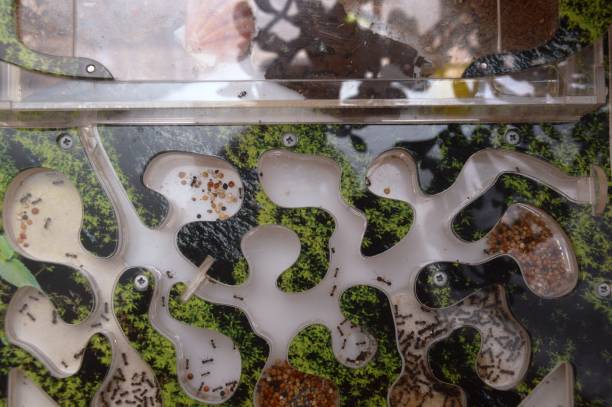The Fascinating World of Ant Farms: A Closer Look at this Unconventional Pet Trend
Ant farms have long fascinated both children and adults alike, with their intricate tunnels and industrious inhabitants providing an intriguing insight into a world often overlooked. These miniature ecosystems not only serve as an educational tool, but they have also emerged as a unique pet trend, captivating a growing number of enthusiasts across the globe.

In this article, we delve into the fascinating world of ant farms, tracing their historical roots, exploring their current significance, and discussing their potential impact on the pet industry.
The Beginnings of Ant Farming
The concept of ant farming or ant keeping, known as myrmecology, has roots tracing back to the 19th century. French entomologist Charles Janet is credited with the creation of the first formicarium, a specially designed habitat for the study and observation of ant colonies, in 1881. However, the term ‘ant farm’ was popularized in the mid-20th century by Milton Levine, who patented his version of the formicarium and launched the ‘Uncle Milton’s Ant Farm’ in 1956.
Modern Ant Farming: A Growing Trend
Fast forward to the present, and the fascination with ant farms has far from waned. On the contrary, the ant keeping hobby has surged in popularity, driven partly by the rise of social media platforms where enthusiasts share their colonies’ progress and exchange tips. This growth is also attributed to a broader trend of unconventional pet ownership, as people seek unique and low-maintenance pets.
Ant farms offer a captivating glimpse into the complex social structures of ant colonies, a spectacle that can provide endless hours of entertainment. Their maintenance requires minimal effort compared to traditional pets, making them an appealing choice for busy individuals or families.
The Market Impact and Price Range of Ant Farms
As the demand for ant farms grows, so does their market presence. A variety of ant farms, ranging from beginner kits to advanced ecosystems, have entered the market to cater to this burgeoning interest.
Typically, a starter ant farm kit can cost anywhere from $20 to $40, depending on the brand and the included features. More advanced setups with larger colonies and more intricate habitats can range from $100 to upwards of $500.
This increasing market presence is expected to spur growth in the pet industry, particularly within the segment of unconventional or ‘exotic’ pets.
The Future of Ant Farming
The future of ant farming looks promising, with technological advancements paving the way for increasingly sophisticated ant farms. For instance, some companies are now offering ant farms with built-in cameras, allowing owners to capture close-up footage of their ant colonies.
As the interest in ant farming continues to grow, it is anticipated that this trend will contribute to a broader understanding and appreciation of these often-underestimated creatures, sparking a new wave of interest in entomology and biodiversity.
In conclusion, ant farms offer a captivating window into the world of one of nature’s most industrious creatures. Whether as a hobby, an educational tool, or a unique pet, these miniature ecosystems are sure to continue captivating individuals for generations to come.
So, the next time you see an ant hill, you might just look at it with a newfound sense of fascination. After all, it’s not just dirt and insects—it’s a buzzing metropolis teeming with life, industry, and endless mysteries waiting to be uncovered.




